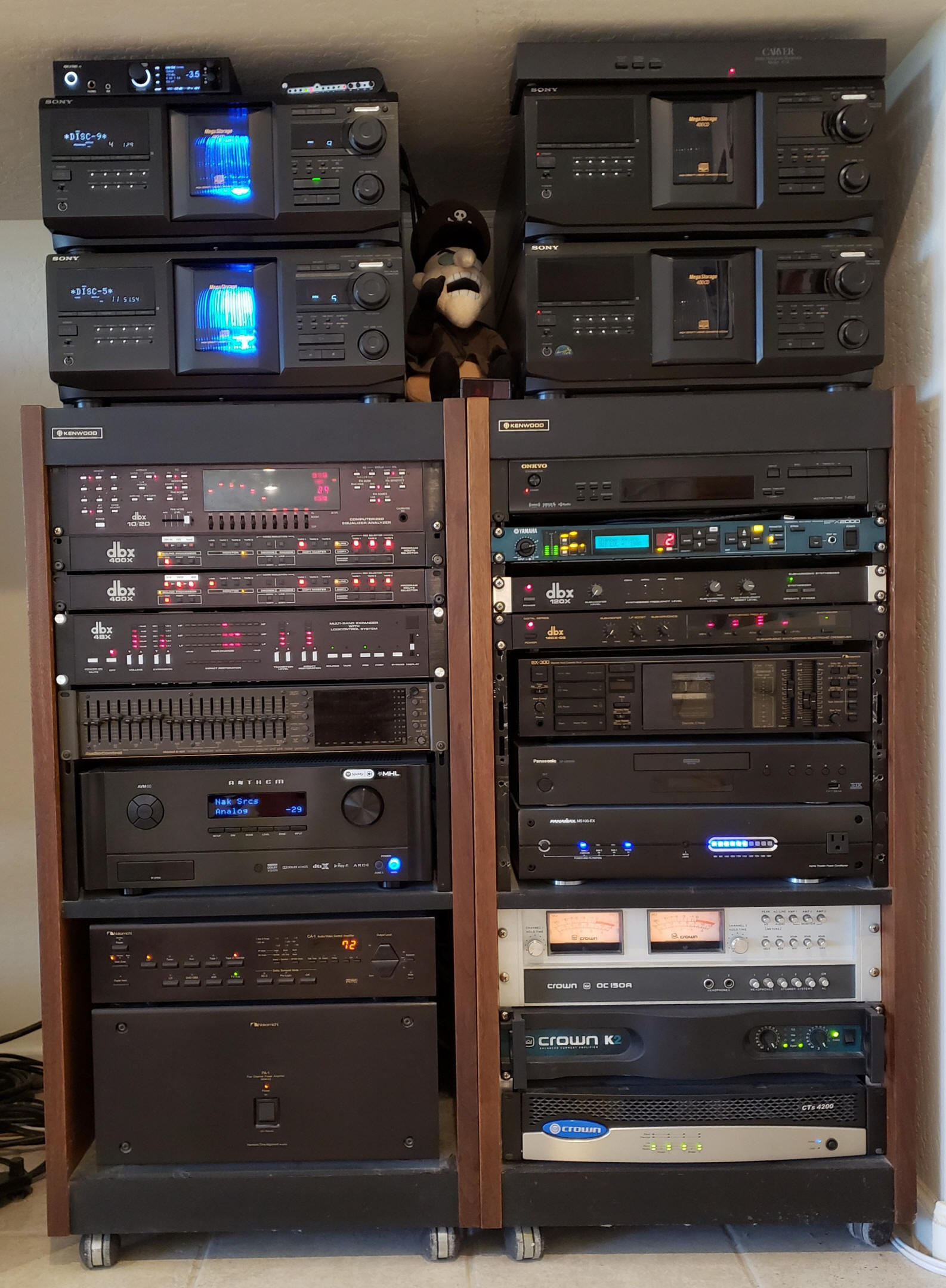D
Deleted member 58722
Guest
And it works rather well.Yeah you are right, headphones only. By the text I mean simulating the experience of listening to a track in a [professional-studio-with-high-end-monitors] (through headphones).
And it works rather well.Yeah you are right, headphones only. By the text I mean simulating the experience of listening to a track in a [professional-studio-with-high-end-monitors] (through headphones).

There is no such thing as ideal. It's like asking "what is the ideal type of art?"I think it is a great idea. The problem is knowing how to tune the VST to the ideal settings *and* for the companies selling it, avoiding “counterfeit” settings or software piracy.
I am an "audiophile" and former recording engineer with many many thousands of hours of live listening in the hall, no microphones or electronics - ears direct.Why "audiophiles" don't use VSTs? Concept is pretty clear - you would get objectively saying the most precise amp, speaker - entire audio rig - and then colorize signal digitally at source (well, you could route analog signal to the actual analog rig, but plugins mimic analog rigs so well already), add up some distortion (Ozone Pro Exciter, Fabfilter Saturn etc), EQ (Pro-Q etc).
I've been observing the audiophile community for a pretty long time now and I've noticed all conversations come down to one thing:
People just don't like the mix, it's literally that simple, either song is actually poorly mixed or people just don't enjoy the tonality that audio engineer offered them.
Also why don't we have DSP's with support for VSTs? (I don't know any, if you know one, let me know)
Maybe money is the issue as always? Amp can be sold for 5k USD, typical plugin goes for <500 USD (and that's most often the price of entire bundle!), so it might not be worth it for audiophile companies to change the mindset behind the "audio quality"
Or maybe, I don't like to put it this way, but maybe audiophiles are just too dumb and they think measured gear distortion is different from the same but digitally applied one? (Same thing goes for EQs etc)
Now that’s proper!With apologies to the purists, I've been running my system as a “playback studio” for so long that half of my processors operate in the analog domain.

Been running down this road for decades and loving it every step of the way. The added bonus of taking an active role at the reproduction end is that I rarely get the "upgrade bug" because I can make the system sound like whatever I want at the moment. Larger venue? Enhanced dynamic range, sharper impact? Move the performance forward/back; widen or narrow the stage? No problem. Freakin' LOVE it! You do yours, and I'll do mine.
This was the recording technicians job. If your room and speakers sounds different from what the technicians heard in the control try acoustically treating your room, or different speakers. If they failed find a different recording.I recently discovered that the Scheps Omni Channel 2 plugin, feeding the stock Cubase stereo widening plugin, works great for expanding the sound stage, before the signal goes to my "audiophile" poweramp feeding Klipsch speakers. It think it may sound even better when followed by an outboard mastering EQ and compressor, but it's hard to tell given changes in volume.
In any case, I'm also looking for "depth" in a plugin to apply to music from Spotify. You know that 3d, holographic tube thing audiophiles rave about... does that exist in plugin form? How about a plugin for "air" enhancement? And for making the speakers disappear? And for enhancing imaging? Are any of these qualities possible with VSTs?
To be clear, I'm looking for plugins to apply on the master bus, not plugins for individual tracks during mixing.
PTEq-X as vocal pasive tube PEQ (4 tubes to choose and bandwidth regulator) and play with MConvolutionEZ and MFreeformPhase (come together with bunch other plugins in the package) for phase correction and convolution simulation of bunch of spaces (tho more useful for other things as convolution corrections for speakers especially for highs if you ask me). And it's all for free so enjoy.I recently discovered that the Scheps Omni Channel 2 plugin, feeding the stock Cubase stereo widening plugin, works great for expanding the sound stage, before the signal goes to my "audiophile" poweramp feeding Klipsch speakers. It think it may sound even better when followed by an outboard mastering EQ and compressor, but it's hard to tell given changes in volume.
In any case, I'm also looking for "depth" in a plugin to apply to music from Spotify. You know that 3d, holographic tube thing audiophiles rave about... does that exist in plugin form? How about a plugin for "air" enhancement? And for making the speakers disappear? And for enhancing imaging? Are any of these qualities possible with VSTs?
To be clear, I'm looking for plugins to apply on the master bus, not plugins for individual tracks during mixing.
The cheapest (easy-to-do) way I know of is to get a USB interface with optical in/out, (e.g. this) a refurbished Windows mini-PC (e.g. one of these) and then use EQAPO to load the VSTs.I am considering low cost ways in an accurate reproduction chain to bring vsts into my listening environment.
It's debatable as to whether it exists at all.You know that 3d, holographic tube thing audiophiles rave about... does that exist in plugin form?
Boost EQ by about +3dB and/or add harmonic distortion above 10khz.How about a plugin for "air" enhancement?
No plugin, just better speakers or room treatment.And for making the speakers disappear?
Improving imaging by adding effects on the master channel is probably quite hard to do.And for enhancing imaging? Are any of these qualities possible with VSTs?
